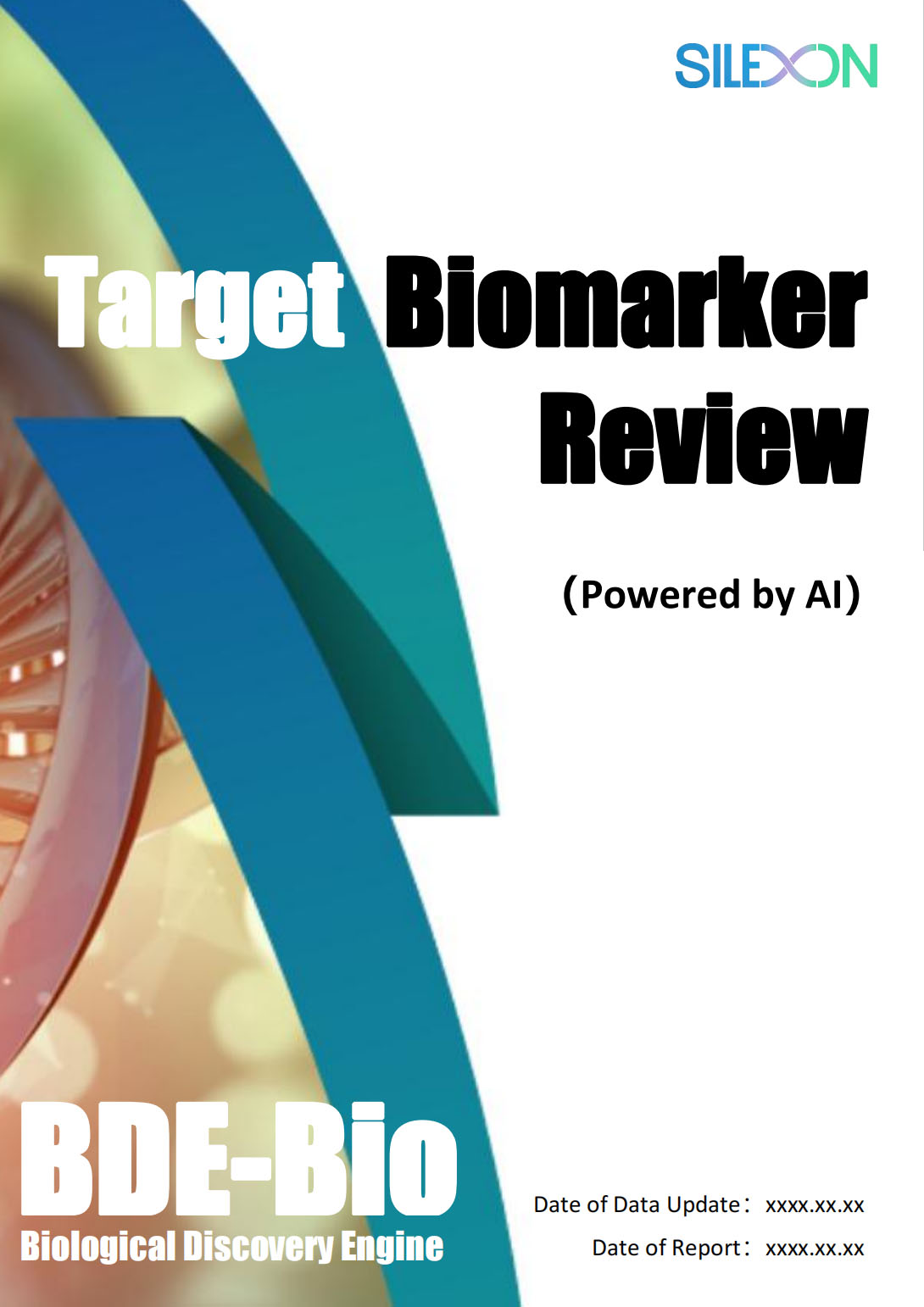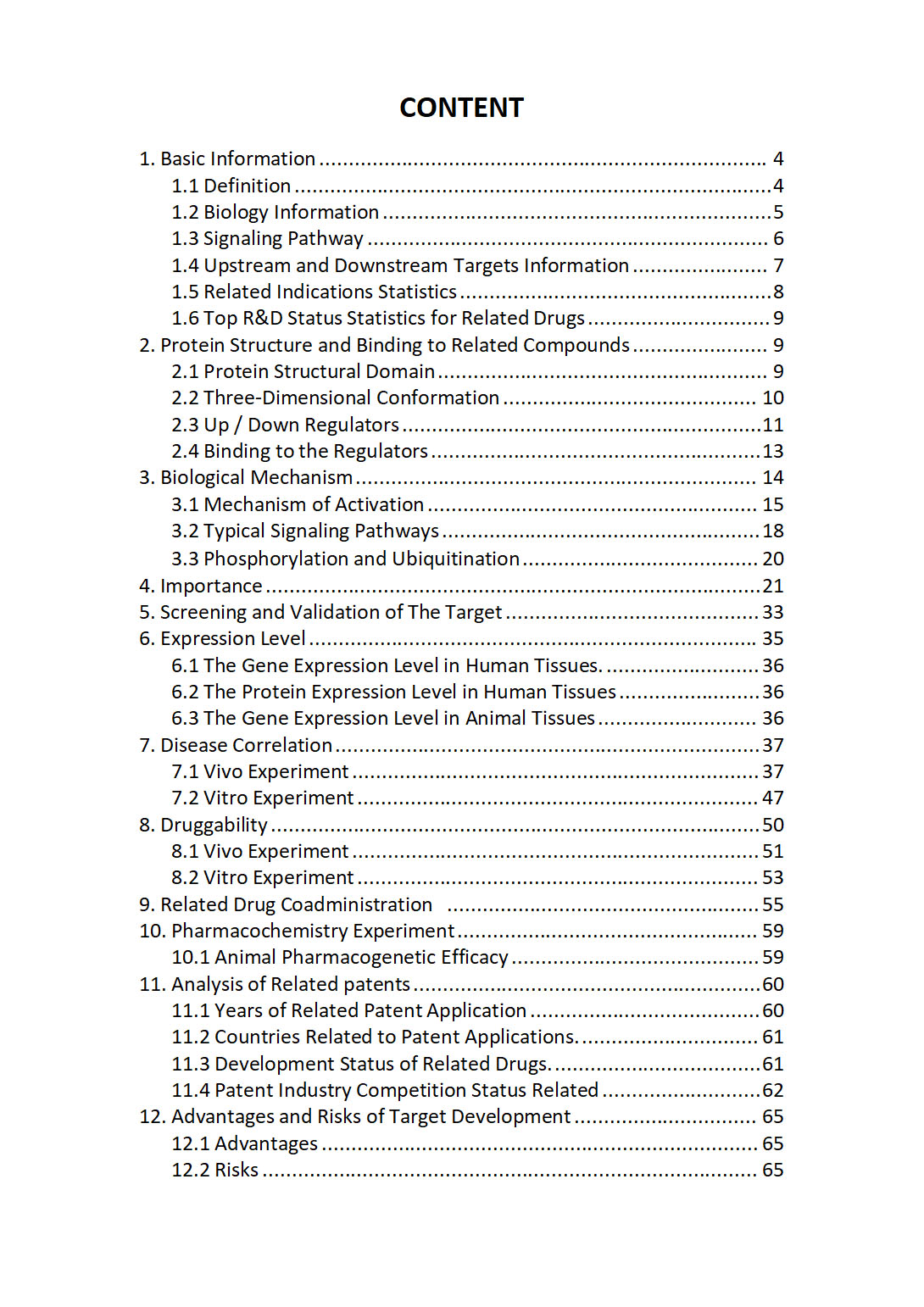Glutaminase (nonspecified subtype) Related Diseases


Related Diseases
1) Arthritis
Arthritis, also known as inflammatory joint disease, is related to rheumatoid arthritis and juvenile rheumatoid arthritis, and has symptoms including arthralgia, back pain and metatarsalgia. An important gene associated with Arthritis is SYK (Spleen Associated Tyrosine Kinase), and among its related pathways/superpathways are Innate Immune System and MIF Mediated Glucocorticoid Regulation. The drugs Entecavir and Chlorhexidine have been mentioned in the context of this disorder. Affiliated tissues include joint, bone and bone marrow, and related phenotypes are Decreased Tat-dependent HIV-LTR-beta-galactosidase protein expression and homeostasis/metabolism
2) Metabolic Diseases
3-Hydroxyacyl-Coa Dehydrogenase Deficiency, also known as hadh deficiency, is related to long-chain 3-hydroxyacyl-coa dehydrogenase deficiency and hyperinsulinemic hypoglycemia, familial, 4, and has symptoms including emaciation An important gene associated with 3-Hydroxyacyl-Coa Dehydrogenase Deficiency is HADH (Hydroxyacyl-CoA Dehydrogenase). The drugs Naloxone and Buprenorphine have been mentioned in the context of this disorder. Affiliated tissues include liver, heart and skeletal muscle, and related phenotypes are feeding difficulties in infancy and growth delay
3) Multiple Myeloma
Myeloma, Multiple, also known as multiple myeloma, is related to monoclonal gammopathy of uncertain significance and plasma cell neoplasm. An important gene associated with Myeloma, Multiple is LIG4 (DNA Ligase 4), and among its related pathways/superpathways are Breast cancer pathway and MAPK Signaling: Mitogens. The drugs Busulfan and Levofloxacin have been mentioned in the context of this disorder. Affiliated tissues include Blood, and related phenotypes are osteopenia and pathologic fracture
4) Acute Leukemia
Acute Leukemia, also known as stem cell leukaemia, is related to acute biphenotypic leukemia and leukemia, acute lymphoblastic. An important gene associated with Acute Leukemia is KMT2A (Lysine Methyltransferase 2A), and among its related pathways/superpathways are Nervous system development and PI3K-Akt signaling pathway. The drugs Busulfan and Rasburicase have been mentioned in the context of this disorder. Affiliated tissues include bone marrow, myeloid and t cells, and related phenotypes are Increased shRNA abundance (Z-score > 2) and Increased shRNA abundance (Z-score > 2)
5) Malignant Peripheral Nerve Sheath Tumor
Malignant Peripheral Nerve Sheath Tumor, also known as malignant neurilemmoma, is related to malignant triton tumor and epithelioid malignant peripheral nerve sheath tumor. An important gene associated with Malignant Peripheral Nerve Sheath Tumor is NF1 (Neurofibromin 1), and among its related pathways/superpathways are Apoptotic Pathways in Synovial Fibroblasts and Disease. The drugs Doxorubicin and Cyclophosphamide have been mentioned in the context of this disorder. Affiliated tissues include lung, t cells and small intestine, and related phenotypes are Increased shRNA abundance (Z-score > 2) and Increased shRNA abundance (Z-score > 2)
6) Inflammatory Bowel Disease
Inflammatory Bowel Disease, also known as inflammatory bowel diseases, is related to inflammatory bowel disease 6 and inflammatory bowel disease 9. An important gene associated with Inflammatory Bowel Disease is IL37 (Interleukin 37). The drugs Copper and Zinc cation have been mentioned in the context of this disorder. Affiliated tissues include colon, small intestine and bone marrow.
7) Malaria
Malaria, also known as malaria, susceptibility to, is related to plasmodium falciparum malaria and plasmodium vivax malaria, and has symptoms including angina pectoris, chest pain and edema. An important gene associated with Malaria is SLC4A1 (Solute Carrier Family 4 Member 1 (Diego Blood Group)), and among its related pathways/superpathways are Innate Immune System and Response to elevated platelet cytosolic Ca2+. The drugs Lumefantrine and Artemether have been mentioned in the context of this disorder. Affiliated tissues include spleen, liver and t cells, and related phenotypes are nausea and vomiting and fever
8) Pain
Paine Syndrome, also known as pain disorder, is related to paroxysmal extreme pain disorder and indifference to pain, congenital, autosomal recessive. An important gene associated with Paine Syndrome is HFE (Homeostatic Iron Regulator), and among its related pathways/superpathways are Cardiac conduction and Neuropathic Pain-Signaling in Dorsal Horn Neurons. The drugs Pregabalin and Dinoprostone have been mentioned in the context of this disorder. Affiliated tissues include dorsal root ganglion, spinal cord and breast, and related phenotypes are microcephaly and spastic diplegia
9) Cancer, Breast
Breast Cancer, also known as breast carcinoma, is related to ovarian cancer and hereditary breast ovarian cancer syndrome, and has symptoms including pelvic pain, lameness, animal and pain. An important gene associated with Breast Cancer is BRCA2 (BRCA2 DNA Repair Associated), and among its related pathways/superpathways are Gene expression (Transcription) and ERK Signaling. The drugs Prednisolone phosphate and Prednisolone acetate have been mentioned in the context of this disorder. Affiliated tissues include breast, lymph node and prostate, and related phenotypes are breast carcinoma and Decreased viability
10) Cancer, Prostate
Prostate Cancer, also known as prostate carcinoma, is related to breast cancer and prostate disease, and has symptoms including angina pectoris, tremor and equilibration disorder. An important gene associated with Prostate Cancer is CHEK2 (Checkpoint Kinase 2), and among its related pathways/superpathways are Endometrial cancer and Breast cancer pathway. The drugs Sodium citrate and Sildenafil have been mentioned in the context of this disorder. Affiliated tissues include prostate, bone and lymph node, and related phenotypes are prostate cancer and neoplasm
11) Cancer, Colon
Colorectal Cancer, also known as colon cancer, is related to lynch syndrome and colonic benign neoplasm, and has symptoms including abdominal pain, constipation and diarrhea. An important gene associated with Colorectal Cancer is CTNNB1 (Catenin Beta 1), and among its related pathways/superpathways are Disease and ERK Signaling. The drugs Tramadol and Ferrous fumarate have been mentioned in the context of this disorder. Affiliated tissues include colon, rectum and liver, and related phenotypes are renal cell carcinoma and neoplasm of the stomach
12) Cancer, Lung
Lung Cancer, also known as non-small cell lung carcinoma, is related to lung cancer susceptibility 3 and small cell cancer of the lung, and has symptoms including cough, chest discomfort and weight loss. An important gene associated with Lung Cancer is BRAF (B-Raf Proto-Oncogene, Serine/Threonine Kinase), and among its related pathways/superpathways are Innate Immune System and Apoptotic Pathways in Synovial Fibroblasts. The drugs Pemetrexed and Erlotinib have been mentioned in the context of this disorder. Affiliated tissues include lung, lungs and brain, and related phenotypes are lung adenocarcinoma and alveolar cell carcinoma
13) Graft-versus-host Disease
Graft-Versus-Host Disease, also known as graft-versus-host disease, susceptibility to, is related to bronchiolitis obliterans and acute graft versus host disease. An important gene associated with Graft-Versus-Host Disease is IL10 (Interleukin 10), and among its related pathways/superpathways are Cytokine Signaling in Immune system and PAK Pathway. The drugs Tacrolimus and Lomustine have been mentioned in the context of this disorder. Affiliated tissues include Bone, bone marrow and t cells, and related phenotypes are elevated hepatic transaminase and skin erosion
14) Colitis
Colitis is related to ulcerative colitis and inflammatory bowel disease 1. An important gene associated with Colitis is SYK (Spleen Associated Tyrosine Kinase), and among its related pathways/superpathways are Innate Immune System and ERK Signaling. The drugs Magnesium citrate and Doxycycline have been mentioned in the context of this disorder. Affiliated tissues include colon, bone marrow and t cells, and related phenotypes are no effect and no effect
15) Encephalopathy, Hepatic
Hepatic Encephalopathy, also known as encephalopathy, hepatic, is related to hepatic coma and hepatorenal syndrome. An important gene associated with Hepatic Encephalopathy is F2 (Coagulation Factor II, Thrombin), and among its related pathways/superpathways are Metabolism and Immune response IL-23 signaling pathway. The drugs Propofol and Midazolam have been mentioned in the context of this disorder. Affiliated tissues include liver, brain and globus pallidus, and related phenotypes are no effect and no effect
16) Autoimmune Disease
Autoimmune Disease, also known as autoimmune diseases, is related to vitiligo-associated multiple autoimmune disease susceptibility 1 and systemic lupus erythematosus. An important gene associated with Autoimmune Disease is AIS4 (Autoimmune Disease, Susceptibility To, 4), and among its related pathways/superpathways are Innate Immune System and MIF Mediated Glucocorticoid Regulation. The drugs Sofosbuvir and Ledipasvir have been mentioned in the context of this disorder. Affiliated tissues include t cells, bone marrow and skin, and related phenotypes are autoimmune antibody positivity and endocrine/exocrine gland
17) AIDS Dementia Complex
Aids Dementia Complex, also known as aids related cognitive impairment, is related to acquired immunodeficiency syndrome and dementia. An important gene associated with Aids Dementia Complex is ITIH4 (Inter-Alpha-Trypsin Inhibitor Heavy Chain 4), and among its related pathways/superpathways are Akt Signaling and PAK Pathway. The drugs Atorvastatin and Racepinephrine have been mentioned in the context of this disorder. Affiliated tissues include monocytes, brain and t cells, and related phenotypes are neoplasm and cellular
18) Non-Hodgkin Lymphoma
Lymphoma, also known as non-hodgkin malignant lymphoma nos, is related to lymphoma, hodgkin, classic and lymphoma, non-hodgkin, familial. An important gene associated with Lymphoma is PTPN11 (Protein Tyrosine Phosphatase Non-Receptor Type 11), and among its related pathways/superpathways are IL-9 Signaling Pathways and NF-kappaB Signaling. The drugs Ferrous succinate and Posaconazole have been mentioned in the context of this disorder. Affiliated tissues include t cells, bone marrow and myeloid, and related phenotypes are immune system and hematopoietic system
19) Myelodysplasia
Myelodysplastic Syndrome, also known as myelodysplastic syndromes, is related to leukemia, acute myeloid and juvenile myelomonocytic leukemia. An important gene associated with Myelodysplastic Syndrome is TET2 (Tet Methylcytosine Dioxygenase 2), and among its related pathways/superpathways is Embryonic and Induced Pluripotent Stem Cells and Lineage-specific Markers. The drugs Posaconazole and Micafungin have been mentioned in the context of this disorder. Affiliated tissues include Placenta and Umbilical Cord, and related phenotypes are myelodysplasia and neoplasm
20) Melanoma, Malignant
Melanoma, Cutaneous Malignant 1, also known as familial melanoma, is related to melanoma, cutaneous malignant 9 and skin melanoma. An important gene associated with Melanoma, Cutaneous Malignant 1 is STK11 (Serine/Threonine Kinase 11), and among its related pathways/superpathways are "Cell Cycle, Mitotic" and Endometrial cancer. The drugs BCG vaccine and Vemurafenib have been mentioned in the context of this disorder. Affiliated tissues include skin, eye and lymph node, and related phenotypes are nevus and melanoma
The "Glutaminase (nonspecified subtype) Target / Biomarker Review Report" is a customizable review of hundreds up to thousends of related scientific research literature by AI technology, covering specific information about Glutaminase (nonspecified subtype) comprehensively including but not limited to:
• general information;
• protein structure and compound binding;
• protein biological mechanisms;
• its importance;
• the target screening and validation;
• expression level;
• disease relevance;
• drug resistance;
• related combination drugs;
• pharmacochemistry experiments;
• related patent analysis;
• advantages and risks of development, etc.
The report is helpful for project application, drug molecule design, research progress updates, publication of research papers, patent applications, etc. If you are interested to get a full version of this report, please feel free to contact us at BD@bio.cacnex.com.
More Common Targets
11beta-Hydroxysteroid Dehydrogenase | 14-3-3 Protein | 15-Lipoxygenase | 17-beta-Hydroxysteroid dehydrogenase | 28S ribosomal subunit, mitochondrial | 3-Ketoacyl-CoA Thiolase (3-KAT) | 39S ribosomal subunit, mitochondrial | 4EHP-GYF2 complex | 5-Hydroxytryptamine Receptor | 5-Hydroxytryptamine Receptor 1 (5-HT1) | 5-Hydroxytryptamine Receptor 2 (5-HT2) | 60S Ribosome | 9-1-1 cell-cycle checkpoint response complex | A-Kinase Anchor Proteins | A1BG | A1BG-AS1 | A1CF | A2M | A2M-AS1 | A2ML1 | A2MP1 | A3GALT2 | A4GALT | A4GNT | AAAS | AACS | AACSP1 | AADAC | AADACL2 | AADACL2-AS1 | AADACL3 | AADACL4 | AADACP1 | AADAT | AAGAB | AAK1 | AAMDC | AAMP | AANAT | AAR2 | AARD | AARS1 | AARS2 | AARSD1 | AASDH | AASDHPPT | AASS | AATBC | AATF | AATK | ABALON | ABAT | ABCA1 | ABCA10 | ABCA11P | ABCA12 | ABCA13 | ABCA17P | ABCA2 | ABCA3 | ABCA4 | ABCA5 | ABCA6 | ABCA7 | ABCA8 | ABCA9 | ABCB1 | ABCB10 | ABCB11 | ABCB4 | ABCB5 | ABCB6 | ABCB7 | ABCB8 | ABCB9 | ABCC1 | ABCC10 | ABCC11 | ABCC12 | ABCC13 | ABCC2 | ABCC3 | ABCC4 | ABCC5 | ABCC6 | ABCC6P1 | ABCC6P2 | ABCC8 | ABCC9 | ABCD1 | ABCD2 | ABCD3 | ABCD4 | ABCE1 | ABCF1 | ABCF1-DT | ABCF2 | ABCF3 | ABCG1 | ABCG2
CONTACT
BD@bio.cacnex.com
2025© Cacnex Consulting Ltd. All Rights Reserved

